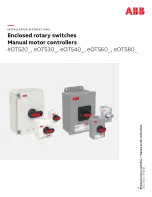
8/16/32 PS/2 KVM over IP switch
19
4.1.2 Initial configuration via serial console
Using a serial terminal, the PS/2 IP-KVM switch has a serial line interface (rear side). This
connector is compliant with the RS 232 serial line standard. The serial line has to be configured
with the parameters given in Table 4-2.
When configuring with a serial terminal, reset the PS/2 IP-KVM switch and immediately press the
“ESC” key. You will see some device information, and a “=>” prompt. Enter “config”, press “Enter”
and wait for a few seconds for the configuration questions to appear.
Parameter Value
Bits/second 115200
Data bits
8
Parity No
Stop bits
1
Flow Control
None
Table 4-2. Serial line parameters
As you proceed, the following questions will appear on the screen. To accept the default values
which are shown in square brackets below, press “Enter”.
IP auto configuration (non/dhcp/bootp) [dhcp]:
IP [192.168.1.22]:
Net mask [255.255.255.0]:
Gateway (0.0.0.0 for none) [0.0.0.0]:
IP autoconfiguration
With this option, you can specify whether the PS/2 IP-KVM switch should get its network
settings from a DHCP or BOOTP server. For DHCP, enter “dhcp“, and for BOOTP enter “bootp“.
If you do not specify any of these, the IP autoconfiguration is disabled and subsequently you will
be asked for the following network settings.
IP address
The IP address the PS/2 IP-KVM switch uses. This option is only available if IP
autoconfiguration is disabled.
Net mask
The net mask of the connected IP subnet. This option is only available if IP autoconfiguration
is disabled.
Gateway address
The IP address of the default router for the connected IP subnet. If you do not have a default
router, enter 0.0.0.0. This option is only available if IP autoconfiguration is disabled.
4.1.3 Keyboard, Mouse and Video configuration
Between the PS/2 IP-KVM switch and the host, there are two interfaces available for transmitting
keyboard and mouse data: USB and PS/2. The correct operation of the remote mouse depends
on several settings, which will be discussed in the following subsections.
















































